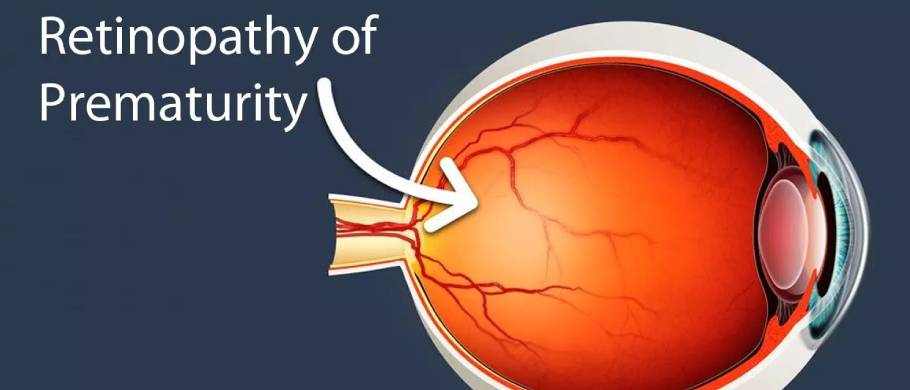What is Retinopathy of Prematurity?
Retinopathy of prematurity (ROP) is a disease of the retina that can occur in premature babies. The retina is the thin, light-sensitive tissue that lines the inside surface of the eye. Cells in the retina convert incoming light into electrical impulses. These electrical impulses are carried by the optic nerve to the brain, which finally interprets them as visual images. As an analogy, if the eye is a camera, then the retina is the film of the camera.
ROP, also known as retrolental fibroplasia (RLF), was first described in the mid-1900s. At that time, it was thought that the condition was related to the use of oxygen therapy in newborn, especially premature, babies. Since then, the role of supplemental oxygen in ROP has been disproven. While significant progress has been made into understanding the processes that lead to ROP, the precise mechanisms remain largely unknown.
Types:

Retinopathy of Prematurity is graded according to its severity: Stage I through “Plus” disease (+).
- Stage 1: Demarcation line
- Stage 2: Ridge
- Stage 3: Ridge with the extraretinal fibrovascular proliferation
- Stage 4: Retinal detachment “Plus” disease (+)
Symptoms:
- Depending on the severity, visual acuity varies from 20/20 to total blindness.
- Variable visual field defects, usually in the central field of vision (observed during an ophthalmological examination done by a retina specialist)
Diagnosis:
Diagnosis is done during an ophthalmological examination either before the infant leaves the hospital or within five to seven weeks of birth. Screening is recommended for all premature and low-birthweight babies, especially those receiving supplemental oxygen.
Treatment:
For many babies, ROP often gets better on its own. But if it’s severe and the risk of a detached retina is high, your child’s doctor will want to start treatment. About 10% of babies screened for ROP will need to be treated.
This can involve:
- Laser surgery: Small laser beams are used to treat the sides of the retina. This stops the growth of abnormal blood vessels. It takes 30-45 minutes per eye. This is the most common way ROP is treated, and it’s been done safely for many years. But your baby may lose some or all of their peripheral (side) vision.
- Cryotherapy: Instead of burning away the scars, freezing cold temperatures are used to stop more blood vessels from spreading on the retina. This is an older form of ROP treatment. It also causes a loss of side vision.
- Injection; A newer way to treat ROP is to put an anti-cancer drug into each eye. Bevacizumab (Avastin) blocks new growth of blood vessels in tumors, and it can do the same in the eyes. This treatment is promising, but more research is needed to make sure there aren’t long-term side effects. It’s also unclear whether the ROP may come back over time.
If the retina is detached, your child’s doctor may need to do a more complex surgery: - Scleral buckling: A small, stretchy band is placed around the white of the eye, causing it to compress slightly. This allows the torn retina to move closer to the outer wall of the eye where it belongs.
- Vitrectomy: During this surgery, the clear gel (vitreous) in the center of the eye is removed and replaced with saline solution. Then, the scar tissue that’s pulling the retina out of place is removed.
How do I make an appointment?
The appointment process at Devgiri Memorial Hospital PCMC Pune is very simple. You can directly call on 09657002695. Also with the help of the “Book an Appointment” Form you can book your appointment by just filling in the basic information. We will contact you via email or phone call to confirm your appointment.



